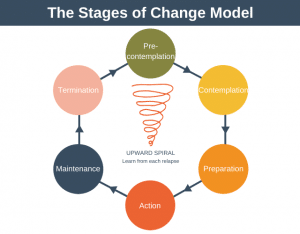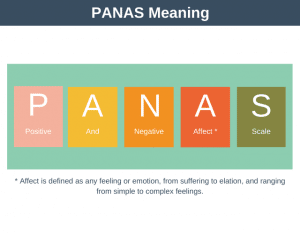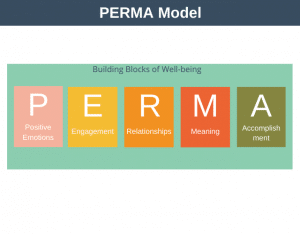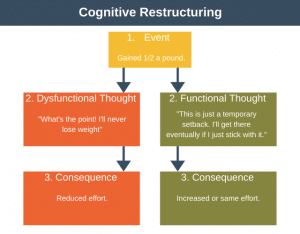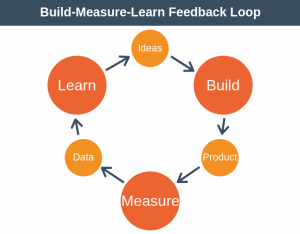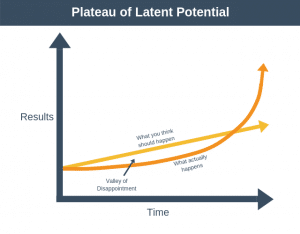Although you may have never heard of the term Poka-Yoke, you have probably encountered them many times.
Have you ever put a new Sim card into your mobile phone? If so, you may have noticed that the Sim cardholder and the Sim card are designed in such a way as to ensure there is only one right way for the card to fit. This is a Poka-Yoke (pronounced PO-ka yo-KAY).
Poka-Yoke is the Japanese name for a mechanism that prevents a user of a process from making an inadvertent mistake. Poka-Yoke literally translates as “mistake-proofing.” The logic behind a Poka-Yoke is that if we don’t make a mistake in the first place then we don’t have to spend time and money fixing that mistake.
Examples of Poka-Yoke
There are many examples of Poka-Yoke in daily life:
- The sequence that you use at an ATM, for example. When using an ATM, you receive back your bank card first, before the machine issues your cash. This sequence prevents you from walking away with the money and forgetting your card.
- When you visit a restaurant, you may have noticed the way that waiters enter or leave the kitchen. Most restaurants have a system of double doors, preventing the waiters from crashing into one another.
- When your mobile phone battery is running low, you grab a USB cable to recharge it. You can try plugging in the cable one way, only to find it won’t fit in the socket. The design limits you to connect it one way only.
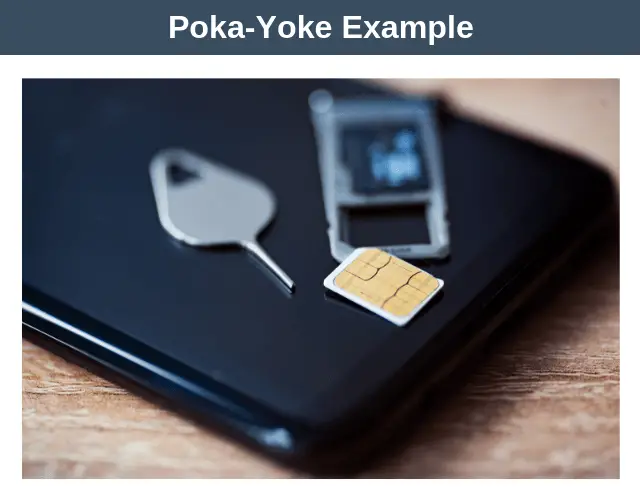
The fact is humans do make mistakes and are not infallible. These mistakes can result in impacts that are sometimes frustrating but can also be costly or even dangerous.
Background
Industries use the Poka-Yoke technique in lean manufacturing – they wish to avoid defects and minimize mistakes because they might be producing thousands or millions of the same product. Optimizing their manufacturing process to control the impact of errors can significantly reduce the costs of production.
The Poka-Yoke technique was developed and documented by Shingeo Shingo in the 1960s as part of the Toyota Production System. The Toyota system is a precursor to lean manufacturing, which has the aim of manufacturing with minimal waste and without sacrificing productivity.
Shingeo was careful to distinguish between mistakes and defects; defects occur when the mistakes are allowed to reach the customer. A Poka-Yoke aims to implement a control in a process so that mistakes can be detected and corrected immediately, eliminating defects at the source.
Types of Poka-Yoke
Broadly speaking, Poka-Yoke fall into two distinct types:
- Control Poka-Yoke: Prevents a mistake from being made before it happens, and so eliminates it.
- Warning Poka-Yoke: Alerts the operator a mistake is being made, so immediate action can be taken to avoid it.
Methods of Implementing Poka-Yoke
There are three methods (or mechanisms) you can use to create a Poka-Yoke. These can apply to both types of Poka-Yoke:
1. Contact Method
The contact method of Poka-Yoke identifies mistakes by testing the physical attributes of an object like its shape, or size, color, or weight.
2. Constant Number Method
The Constant Number Method (or fixed-value method) of Poka-Yoke works for an activity that is repeated many times. This type of Poka-Yoke alerts the operator if the wrong number of moves have been made in the process.
3. Sequence Method
The Sequence Method of Poka-Yoke determines whether the appropriate sequence of steps have been made.
Poka-Yoke Examples
Let’s look at some examples of Poka-Yoke for all of the above.
| Control Poka-Yoke | Warning Poka-Yoke | |
|---|---|---|
| Contact Method | Imagine a machine that could be activated with one hand. This would leave one hand free. This could be dangerous so many machines are designed such that they can only be activated with two hands. | Consider a factory that makes tens of thousands of cakes each day. Before each cake is placed in the oven they are weighed. Each cake is expected to be a very specific weight. If it isn’t then something has gone wrong. A high number means too many ingredients have been added. A low number means too few ingredients have been added. |
| Constant Number Method | Medicine that is predosed in daily sachets rather than requiring the user to measure from a larger container. | A tray with 100 spaces for 100 test tubes. All spaces filled means the tray is complete. |
| Sequence Method | When ordering goods online, it is mandatory that you fill in all the required fields. You cannot proceed to the next page unless you do this. | When you start the ignition of a car, if you haven’t fastened your seatbelt then a warning will sound. The warning only stops when you fasten your seatbelt. This helps ensure you don’t accidentally drive off without fastening your seatbelt. |
How to Develop a Poka-Yoke
Poka-Yoke can often be low cost and easy to implement. For a company that manufactures thousands of items making a simple investment in creating a Poka-Yoke can result in savings many times the cost of implementing the Poka-Yoke.
This simple series of steps shows how to develop a Poka-Yoke.
Step One: Identify the Root Cause
You will most likely become aware of the need for a Poka-Yoke because there are frequent occurrences of a mistake or error.
Identify the source of the mistake using the 5-Whys technique.
Step Two: Outline the Full Process
Create a step-by-step outline of the current process. This helps you understand the context behind why the mistake occurs.
Step Three: Identify Options
Identify options to remove the mistake using a control Poka-Yoka. If you can’t figure out how to prevent the error then maybe you can detect the error quickly using a warning Poka-Yoke. Look at using the contact, constant number and sequence method for each type of Poka-Yoke.
Step Four: Choose Your Poka-Yoke
Select the Poka-Yoke mechanism that best solves your problem.
Step Five: Test
Now you have created a Poka-Yoke, you need to test it in the process and assess if it solves the problem.
Step Six: Train Others
Provide training to the people in your team who need to operate the new process.
Example: How to develop your own Poka-Yoke
Imagine you have a small garage and each day find it a hassle to maneuver your car without scratching the paintwork. You could design a Poka-Yoke to help, so you don’t risk scratching the car ever again. Remember, you are looking for a low-cost solution.
Step One: Identify the Root Cause
When parking the car, you know that the hardest part is to judge when to stop the vehicle, so it doesn’t hit the garage wall. You know it’s always a tight fit, but every now and again, the front of the car touches the garage wall, making a small scratch on the car bumper.
By asking yourself why the problem happens, you can understand the situation and find a way for it never to occur again. In this case, you can’t see the bumper and so can’t work out how close you are to the wall.
Step Two: Outline the Full Process
Break down the current process. Firstly, you drive home, arrive in the driveway, stop the car and open the garage door. Then you drive the car close enough to the wall so the garage door will close. You get close enough to the garage wall, guessing that the car is in the right position.
Step Three: Identify Options
Some ideas that could help include having a friend help you park, placing a mirror in the garage so you can see the front of the car, or using an audio sensor to detect the car position.
You don’t want the car to hit the wall, so you want to use a control Poka-Yoke, so you can be sure that it never happens again. One way to do this is to place something out from the wall, knowing if you hit that, you will have parked the car correctly, without hitting the wall.
Step Four: Choose Your Poka-Yoke
You choose to mount a barrier on the garage floor that the car tires can touch when the car is in the correct location. This is a Control Poka-Yoke implemented using the contact method.
Step Five: Test
After installing the barrier, you try it out to test the idea. You drive the car into the garage to the point you feel the car tires touch the barrier. You don’t need to worry about your car hitting the wall again.
Step Six: Train Others
If you have others who drive the car, you can show them how to park it in the garage.
Advantages and Disadvantages
Advantages
Advantages of Poka-Yoke include:
- A Poka-Yoke is a highly useful quality management tool that can be implemented anywhere.
- Using a Poka-Yoke means you can carry out steps in a process, knowing that you will get it right. It helps things work right the first time.
- Implementing a Poka-Yoke doesn’t need to be expensive.
- It is a tool that can help you to avoid relying on human input, knowing that people do make mistakes.
Disadvantages
Disadvantages of Poka-Yoke include:
- A poorly designed Poka-Yoke mechanism may demonstrate useful benefits, only to discover that it doesn’t work 100% of the time.
- As humans, we like to find an easy way of doing something. Some types of Poka-Yoke appear to be useful but create unintended effects. For example, a spelling and grammar checker removes the need for people to actively improve their communication skills. This can show up as a negative trait in other situations in the workplace.
- In lean manufacturing, the aim is to minimize waste while retaining or improving productivity. Be careful that the introduction of a Poka-Yoke in a process does not reduce efficiency.
- Humans have inherent limiting traits, for example, hearing over the top of a noisy background, or being color blind. These human factors need to be carefully understood when creating a Poka-Yoke.
Summary
As humans do make errors, it’s useful to have a tool that prevents frequent occurrences of a mistake happening over and over. Using a Poka-Yoke, you can change a process to ensure that the error never happens again.
Next time you consider the way a process could be improved at home or in the workplace, consider ways to introduce a Poka-Yoke.
